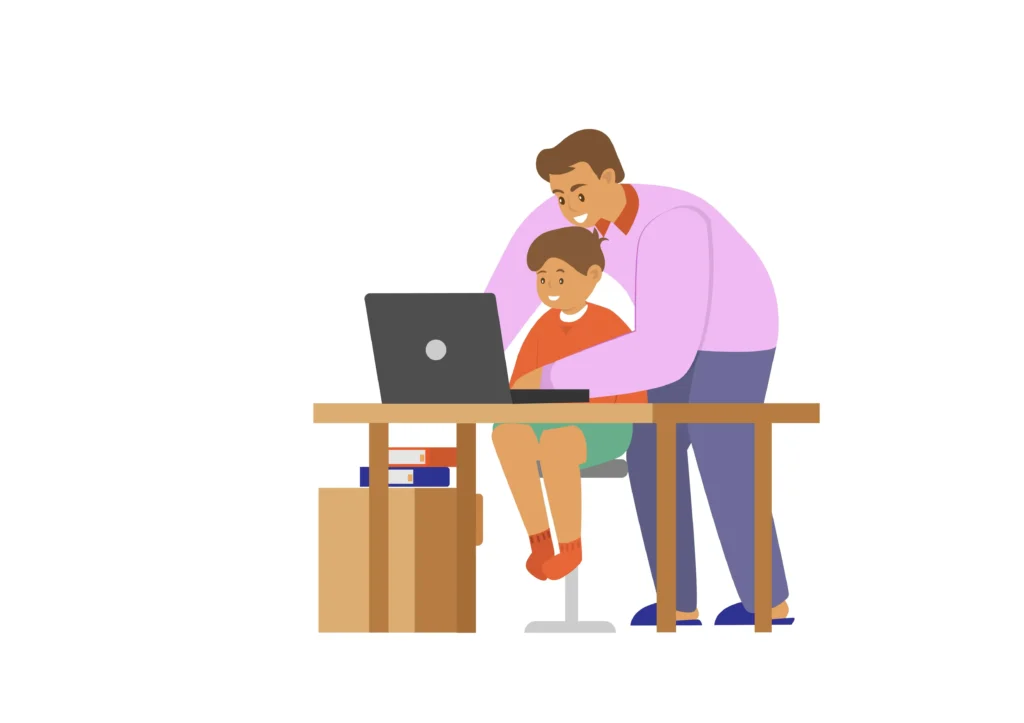Our world is filled with so many differences, medically ill people and mentally retarded. In order to educate them is a serious question that may require some intentions and focus. We are talking about the children with disabilities who are at high risk in society we need to educating the retarted child, but with proper care, procedure and teaching methods, they can contribute to the development of society as same as other children.
Whether you’re a parent or a teacher, the advice we will discuss in this blog post on top tips to educating the retarded child may help you in great favour. Our main objective is to help these students to realize their full potential while also helping them understand what appropriate behaviour within social frameworks is, so let’s look at some great advice that might be useful along the way.
Establish a welcoming and secure learning environment.
When it comes to educating children with developmental disabilities, every child deserves a secure and encouraging learning environment. Some of the best methods for educating a retarded child involve
- Developing a schedule
- Using positive reinforcement
- Encouraging peer contact.
The child will feel more at ease and secure in their surroundings if a routine is established. Praise the child’s efforts, no matter how small they do, as little success will increase their confidence and motivation to study. Encourage the children to socialize with their classmates. This activity will also provide them with the chance to develop their interpersonal abilities and form bonds. With the help of these suggestions, educating a retarded child can be a fulfilling and fruitful experience for both the student and the teacher.
Use techniques for effective reinforcement.
With positive reinforcement techniques, retarded children can significantly improve their educational experience. Even when standard disciplinary techniques are not effective for them, positive reinforcement can help to increase their confidence, drive, and general openness to learning. Some techniques for effective reinforcement are
- Give frequent praise to the youngster
- Give modest prizes for accomplishments
- Using precise language to communicate expectations.
Positive reinforcement techniques can be used by teachers to encourage students with intellectual disabilities to feel powerful, secure, and enthusiastic about learning.
Consider the child’s particular requirements

It might be difficult to educate a child with intellectual challenges, but with the appropriate approach, it can also be enjoyable and fulfilling. The trick is to consider each child’s unique traits and there needs. There are a few things to know to educate a retarded child.
- Don’t treat them differently than other kids. They are unique people who need special care.
- It’s crucial to modify your approaches and strategies to meet their particular needs.
- Acknowledge their negative points while putting an emphasis on their assets and assisting them in boosting their confidence.
With time, care, and understanding, you can assist a child with disabilities in realizing their full potential and leading a happy, contented life.
To promote self-expression, use play, music, and art.
It might be difficult, but it can also be incredibly rewarding to educating a retarded child. While playing with them, doing some art classes, and making fun with each other, you can teach them to be more open and express themselves more often. By providing the children with these outlets, they can explore their imagination and emotions and express themselves in an effective way which they can’t do with traditional communication.
Some top recommendations to educate a retarded child include create a secure and encouraging environment, including enjoyable and engaging activities, and recognizing a kid’s efforts and accomplishments. By appreciating and promoting self-expression, we may support retarded children in the journey of growing their self-confidence.
To aid in learning, use reminders and repetition.
Repetition and reminders are crucial tools for teaching a child with cognitive difficulties since they facilitate learning. The Repetition and reminders are, in fact, two of the best strategies for instructing a cognitively disabled youngster, sometimes known as a “retarded” child. Repetition and reminders both work to keep things fresh in the children’s thoughts while also helping in their retention. By applying these strategies consistently, teachers and caretakers can establish a welcoming learning environment that promotes advancement and success. Although it might require more time and effort, their benefits are enormous.
Promoting Social and Emotional Growth
Educating children with special needs can be a challenging task, but children with intellectual disabilities need to receive support and guidance in their social and emotional development. Along with other academic skills like math and reading, teaching mentally disabled children how to relate to others, control their emotions, and create good relationships is equally important.
Positive reinforcement, establishing reliable routines, and offering numerous opportunities for social connection. Aamong the top recommendations for educating a child with intellectual disabilities. Children with academic challenges can thrive and realize their full potential with time, patience, and an emphasis on social and emotional growth.
Communication with the child that works

When it comes to educating the mentally disabled child, effective communication is essential since it serves as the basis for creating a solid teacher-student relationship. Understand that each child’s learning experience is different. It is necessary to communicate with them with patience, sensitivity, and understanding. To share a mentally disabled child, teachers should avoid complicated words or abstract sentences and instead use simple and direct language.
This technique relies heavily on active listening, enabling teachers to understand the child’s needs, preferences, and difficulties. Teachers can modify their teaching strategies to ensure that instructions are clear and exciting by fully comprehending the child’s viewpoint and communication style. Creating a secure and encouraging environment that promotes open communication gives the child the confidence to express themselves, enabling a good and inclusive learning experience.
Read about: relationships
Conclusion
It might seem impossible for parents to educate a mentally disabled child, but it doesn’t have to be. You can quickly make significant improvements to your child’s educational path by concentrating on creating a secure and encouraging learning environment, utilizing positive reinforcement strategies, taking into account the unique needs of your child, encouraging self-expression through art supplies and music, relying on repetition and reminders to support the learning process, and breaking tasks into manageable chunks that provide rewards for completion.
Don’t lose heart; remember that every step you take today builds a foundation for success tomorrow. You can equip your child with everything they need to excel in school and beyond. By being patient and using the proper training methods.
Frequently Asked questions
Q1: What does “educating the retarded child” mean?
When a child with an intellectual disability is being educated, this is referred to as “educating the retarded child”. It requires identifying and addressing the particular learning issues. They confront to guarantee that these kids receive a suitable and inclusive education.
Q2: How can I create an inclusive learning environment for a child with intellectual disabilities?
Designing a classroom environment that meets the different needs of all students, including those with intellectual disabilities, is important. This can be accomplished by focusing on the needs of each student, differentiating instruction, and encouraging a peer-centred envoirnment.
Q3: What is an Individualised Education Plan (IEP), and why is it crucial for kids with intellectual disabilities?
A child with intellectual disabilities’ individual educational goals, reasonable accommodations, and support services are detailed in a personal education plan (IEP). It guarantees that the child’s specific learning needs are satisfied, enabling teachers to adapt instruction to their student’s strengths and challenges successfully.
Q4: How can I interact with a youngster who has intellectual disabilities?
Using primary, straightforward language, paying attention to the kid’s needs, and showing patience and understanding are all critical components of effective communication with a child with intellectual disabilities. Visuals, gestures, and nonverbal clues can all help to improve comprehension and communication.
Q5: What are some realistic methods for promoting the social and emotional growth of kids with intellectual disabilities?
Training in social skills, fostering peer connections, and providing opportunities for inclusive extracurricular activities are all ways. To promote social and emotional development. Fostering a compassionate and encouraging atmosphere that celebrates each child’s talents helps children develop emotional stability and self-worth.
Q6: How can parents and family membersI work together to assist a child’s education?
Cooperation with parents and other adults who are responsible for them is important for a child to develop. A good support systems can be created by regular contact, exchanging progress reports, and participating in decision-making regarding the child’s education.
Q7: Can we teach retarded childrens with the help of assistive technologies?
Yes, there are a variety of assistive devices that can improve. A child’s learning experience if they have an intellectual disability. These include solutions catering to specific needs, such as speech-to-text software, instructional apps and adaptable keyboards, etc.
Q8: What positive behaviour support techniques can be used to control complex behaviours in the classroom?
Reinforcing positive behaviours and teaching kids in other ways to express themselves are part of positive behaviour support. Positive behaviour management techniques include implementing a reward system, creating visual schedules, and giving a scheduled routine.
Q9: How can teachers care for themselves while working with kids with intellectual disabilities?
Teachers can practise self-care by making time for enjoyment, asking for help from coworkers and counsellor. And maintaining a healthy work-life balance. Caring for their emotional needs enables teachers to perform their jobs more skillfully and compassionately.
Q10: How can I recognise the academic success of retarded kids?
To increase the self-esteem and motivation of kids with intellectual disabilities, it is crucial to recognise their accomplishments, no matter how great or small. A sense of achievement and pride is fostered through praising their efforts, acknowledging their growth, and building a helpful and encouraging school environment.







